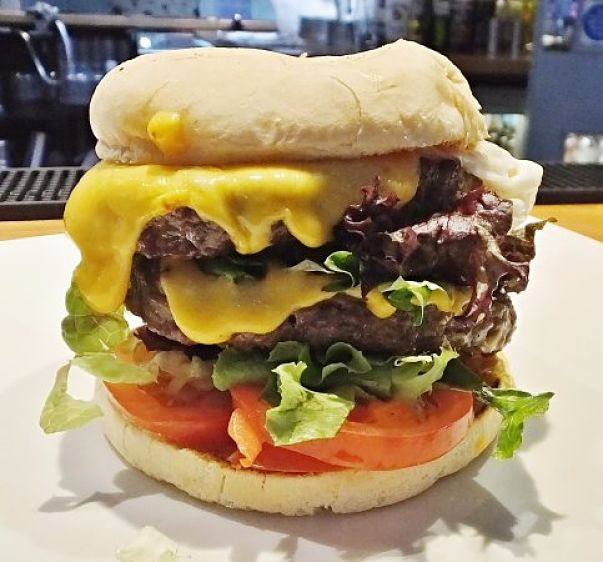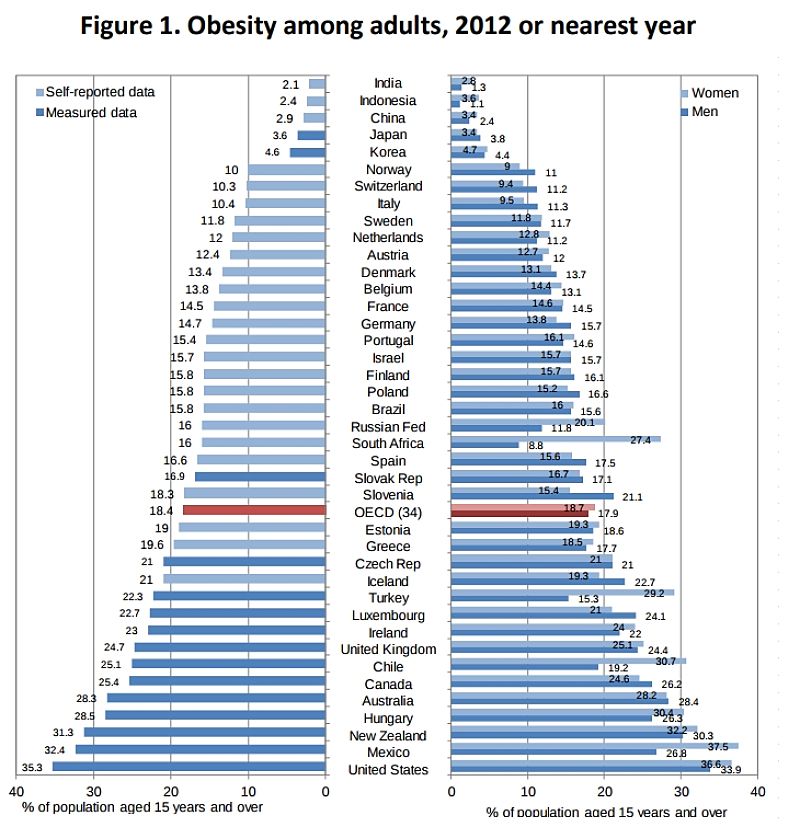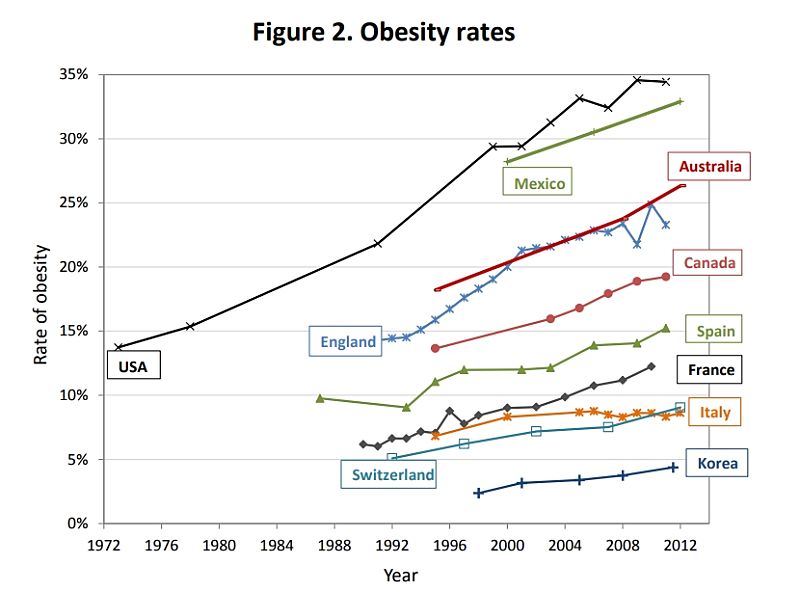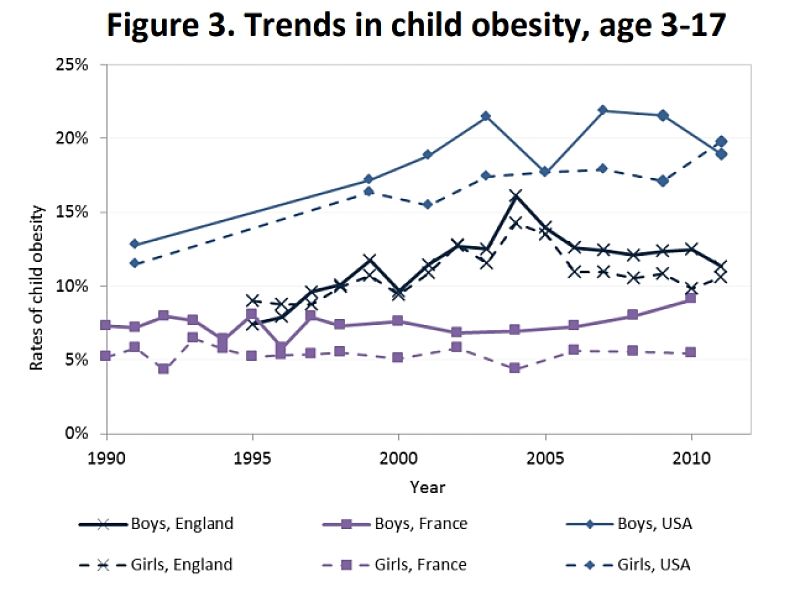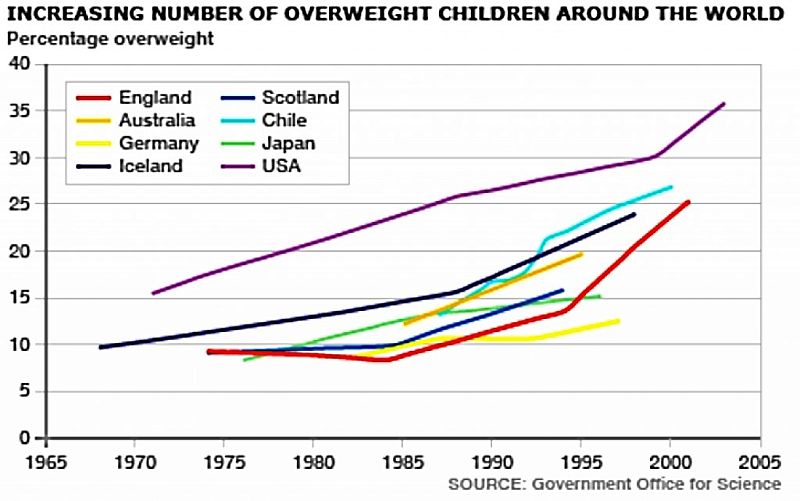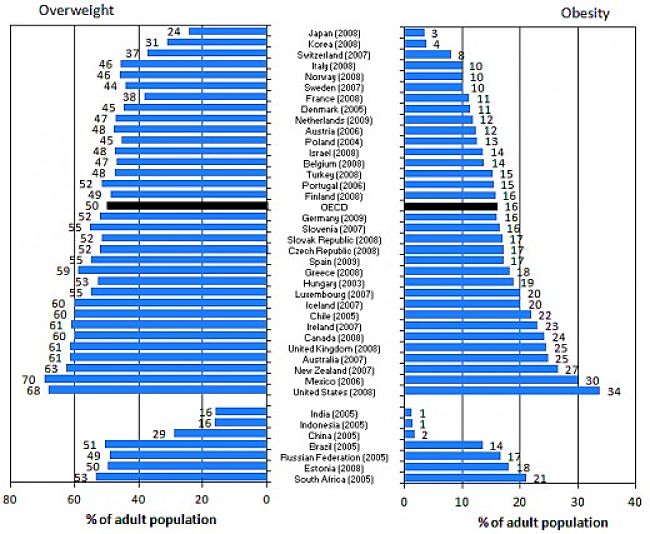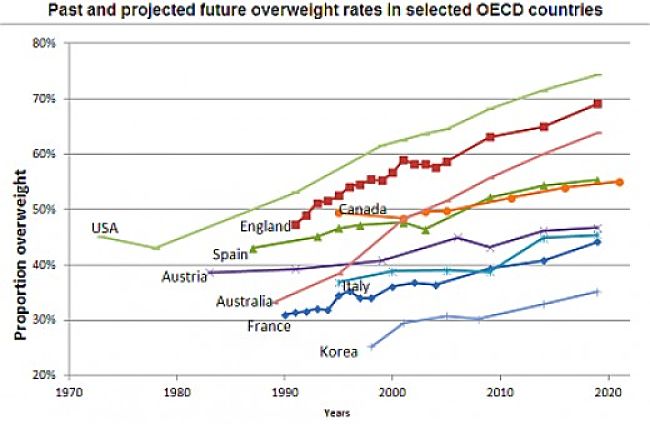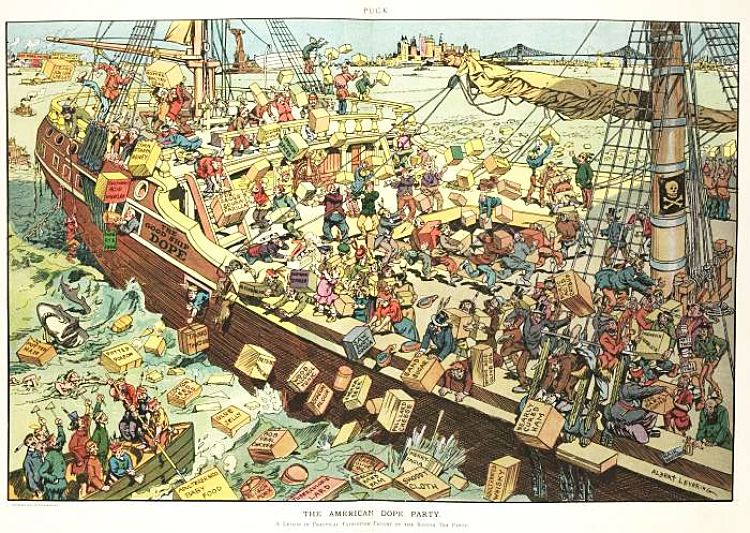Fat Tax on Unhealthy Foods - Proposed Tax on Fat, Soda, Calories, Sugar, Fast Foods to Control Obesity
Denmark has just introduced the first fat food tax in the world by imposing a surcharge on foods that contain more than 2.3 % saturated fats. Many similar taxes on fat, soda, calories, sugar, salt, fast foods, processed foods and even a 'fat person' have been proposed as a way to combat excess weight, obesity and the many health problems associated with excess weight such as heart disease and diabetes. Such taxes have worked for reducing tobacco use and changing alcohol drink choices in many countries. Why not put a tax on fat, calories or sugar? Such a tax is justified to change people's food choices and eating patterns with the funds from the tax used to help cover the huge cost of excess weight to the health budget.
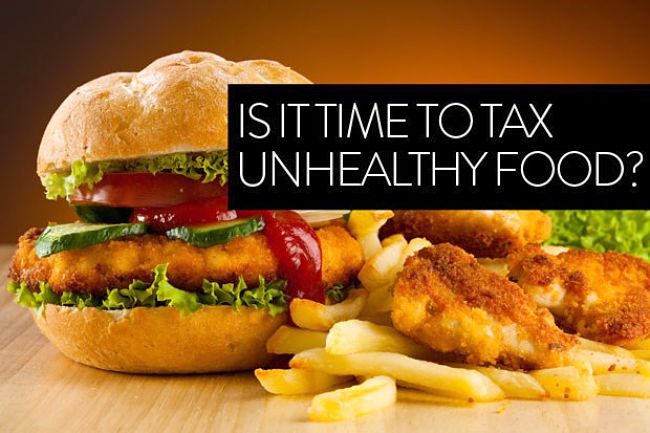
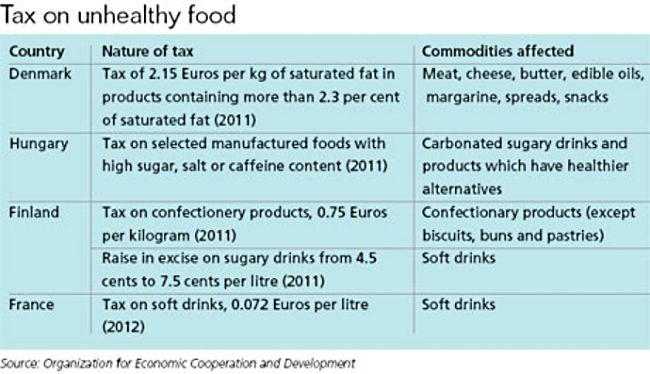
The new Danish tax of some 16 kroner ($2.90) per kilogram (2.2 pounds) of saturated fat in each product sold will be levied on foods like cheese, pizza, butter, milk, oils and meat. Danes will pay a tax equivalent to 8p (12 cents) on a pack of crisps, 30p (50 cents) on butter and an extra 13p (20 cents) on a pound (500g) of mince, as a result of the tax. The tax is expected to yield about 2.2bn Danish Krone (£140m; $220m ), and reduce consumption of saturated fat by about to 10%, and total butter consumption in Denmark by close to 15%.
Another European country, Hungary has recently imposed a tax is on packaged foods that contain unhealthy concentrations of fat, salt, sugar and carbohydrates, as well as products containing more than 20 mg of caffeine per 100 ml of the beverage product.
Something has to be done world-wide as about one third of adults and one fifth of children in the US are obese, and two-thirds of Americans are overweight and the rates are increasing each year. Various studies have shown that making the listing of calories on fast food and restaurant menus compulsory has not bee shown to be effective. Most people simply don't read them or understand the concept of daily food allowances.
Various food labelling systems such as MyPyramid and MyPlate have also been ineffective. The food industry has resisted many measures designed to
improve food choices through better labelling systems.
Traffic Lights System
The attempts by many health groups and government agencies to adopt the traffic light system for front-of-package labelling of packaged foods in the UK, Europe, Australia and America. It is used voluntarily in the UK.
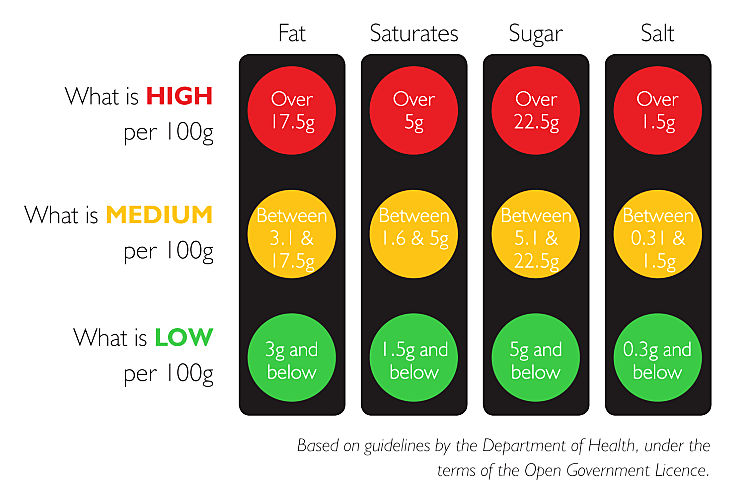
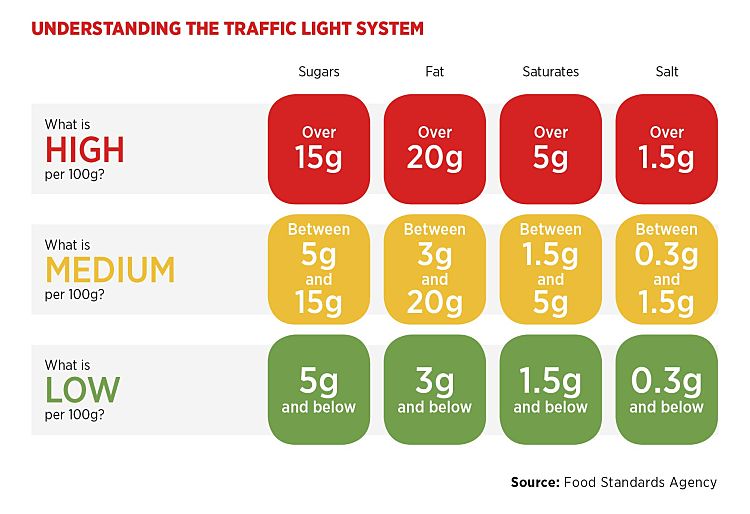
The consumer group CHOICE has called for mandatory front-of-pack Traffic Light labelling in Australia. Traffic Light labelling is a system that features red, green, or amber symbols on the label for each of the main nutrients in the product (such as fat, sugars, and salt). The idea behind Traffic Lights is to make it visually easier for consumers to choose a healthier food by comparing these colour codes between products.
"A spoonful of muesli may be a mouthful of sugar and fat," CHOICE warred, after it tested 159 types of muesli available to consumers in Australia. One brand, The Muesli, was found to contain twice the amount of fat of a McDonald's Double Quarter Pounder. Ten brands tested by CHOICE met Australian food regulator FSANZ's definition of "low fat" (no more than 396 fat) and 11 brands met FSANZ's definition for low sugar" (no more than 5% sugars).
The Australian food industry, led by the Australian Food and Grocery Council (AFGC), has been campaigning for an alternative labelling system known as the Daily Intake Guide (DIG). AFDC Chief Executive Kate Carvell told Australian Food News today, "Traffic light labels categorise foods as good and bad - but all foods can form part of a balanced diet.
"Industry rejects traffic light labelling on the basis that it's badly understood by consumers and the system has been rejected by countries around the world including in Europe. The Daily Intake Guide (DIG) is the labelling system preferred by the European Union and Canada." DIG labels quote a Daily Intake percentage for each of the nutrients, usually in a thumbnail format on the front.
These labels now appear on more than 4,000 supermarket products in Australia and outline the amount of energy, fat, saturated fat, sugar and salt in a standard portion of the food and how that translates to average daily intake.
In June this year, the European Parliament decided against implementing the traffic light labelling system after one of the most expensive lobbying campaigns ever mounted in the European Union - at a cost of a whopping 01 billion. The Traffic Light labelling was adopted in the UK on a voluntary basis (due to EU restrictions).
Will Fat and Calorie Taxes Work?
There is considerable research to show that it would work.
Previous research has shown that taxing pizza and soft drinks can reduce the amount of calories that are consume from these foods. A study of more than 5,000 young adults aged 18 - 30, found that a 10 % tax on soft drinks / soda drinks led to a 7 % reduction in calories, and a 10 % tax on pizza produced a 12 % reduction in calories eaten in pizza. The researchers in this study suggested that an 18 % tax on soda drinks and pizza could cut daily intake by about 60 calories for each person in the population, and could lead to an average weight loss of about 5 lb (2 kg) for every person per year.
Another study tested whether providing calorie information to 178 University students and imposing taxes on the total number of calories bought affected food choices. Increasing prices for the high-calorie foods reduced the total calories chosen for lunch meals when the calories and prices were shown.
In another study a group of mothers were asked to buy groceries for their families 5 times with 5 different sets of prices for the items.
- A control condition
- Price unhealthy foods was raised by 12.5%
- Price unhealthy foods was raised by 25% . There were also two subsidy conditions in which the Price of healthy foods was lowered by 25%
- Price of healthy foods was lowered by 12.5%
Basically, the taxes appeared to work to reduce the total number of calories in the food basket when the tax was applied. When the price of unhealthy foods was raised, the mothers bought healthier alternatives that were lower in carbohydrates, fat and calories. However when the price of healthy foods was reduced, mothers spent their savings on unhealthy foods. Therefore subsidizing the price of healthy foods led to an increase in the number of unhealthy items bought. These results suggest that taxes on unhealthy foods will shift preferences to more healthy foods.
Soda Tax or Soft Drink Tax - These proposed taxes would focus on beverages sweetened with corn syrup, sugar, or other high calorie additives, as well as sports and energy drinks. The aim to discourage unhealthy diets and help pay for the economic costs of obesity.
Numerous studies show a link between consumption of high calorie drinks with weight gain or obesity. For example, a study of 548 schoolchildren in Massachusetts found that for each additional sweet drink consumed per day, the risks of obesity increased by about 60 %.
Another study of more than 51,000 nurses found that those women whose soda drinking increased in time showed higher increases in body-mass index than those who drank less or similar amounts in the two time periods.
Conclusion: These taxes have merit in the fight against obesity.
